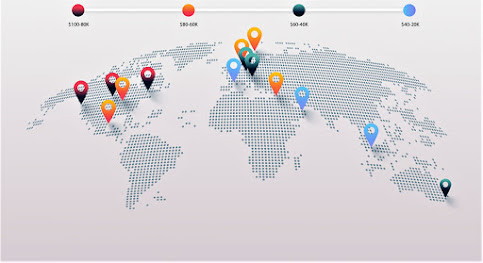How Ewallet Apps Are Changing The FinTech Landscape?
Everything goes digital now, and the way we pay is not an exception. We can see the FinTech domain taking over the traditional (read ‘old-fashioned’) banking, bringing digital payment innovations to life. Take mobile wallets, for example. Having the luxury of making various money transactions at your fingertips can actually change the way we pay. Read on to find ways mobile wallets can disrupt FinTech.
What’s a Mobile Wallet?
Simply speaking, mobile wallets are digital wallets that store your payment card information on your mobile devices: smartphones, tablets, or wearables. You might think that mobile and digital wallets are the same, however, there is a slight difference between them: you can access your digital wallet via your computer or mobile device, while your mobile wallet can be accessed through an app on your smartphone. The ecosystem of the mobile wallet allows processing payments, accessing account information and paying for goods and services without a physical wallet.
Using mobile wallets is very easy. In fact, once you use your phone for payments, you can never go back. After you’ve installed an Ewallet app, all you have to do to make a payment is verify your identity via a security code or biometrics.
Types of Mobile Payments
There are many ways mobile payments are carried out: pay per SMS or phone number, QR payments, cloud-based payments, Near Sound Data Transfer (NSDT), Near Field Communication (NFC), and others. Let us take a closer look at the most popular of them:
QR (quick response) Payments
This method is mostly used for paying retailers. At the check-out, the cashier enters the amount to pay, and the user lets the cashier scan a unique QR code on the mobile device. Once the system identifies the payer, it takes the necessary sum of money from their mobile wallet using a compatible mobile payment app.
Payment Via Mobile Number
With this type of transaction, users have to operate within a single platform. The payer enters the recipient’s phone number in the platform and transfers the needed amount of money instantly.
NFC Payments
Near Field Communication is a set of communication protocols that allow a wireless connection between an NFC-enabled device (usually, a smartphone) and a point of sales (POS) terminal. These transactions are highly secure since credit card details aren’t passed to the retailer, but stored in interim tokens instead.
Conclusion
Increasingly more people use their smartphones as Ewallets to pay everywhere: in a bar, in a tiny shop, or at home, paying off your loan. Thanks to NFC technology and QR code readers, paying with your phone has become very natural, and advanced biometrics plus AI algorithms can detect and prevent fraudulent activity. What’s more, Ewallet mobile transactions are twice faster than physical card transactions. This makes them more valuable, and that’s why retailers create special loyalty programs for people who prefer mobile payments. This is how it looks like Ewallet apps are going to change the FinTech landscape.




Comments
Post a Comment